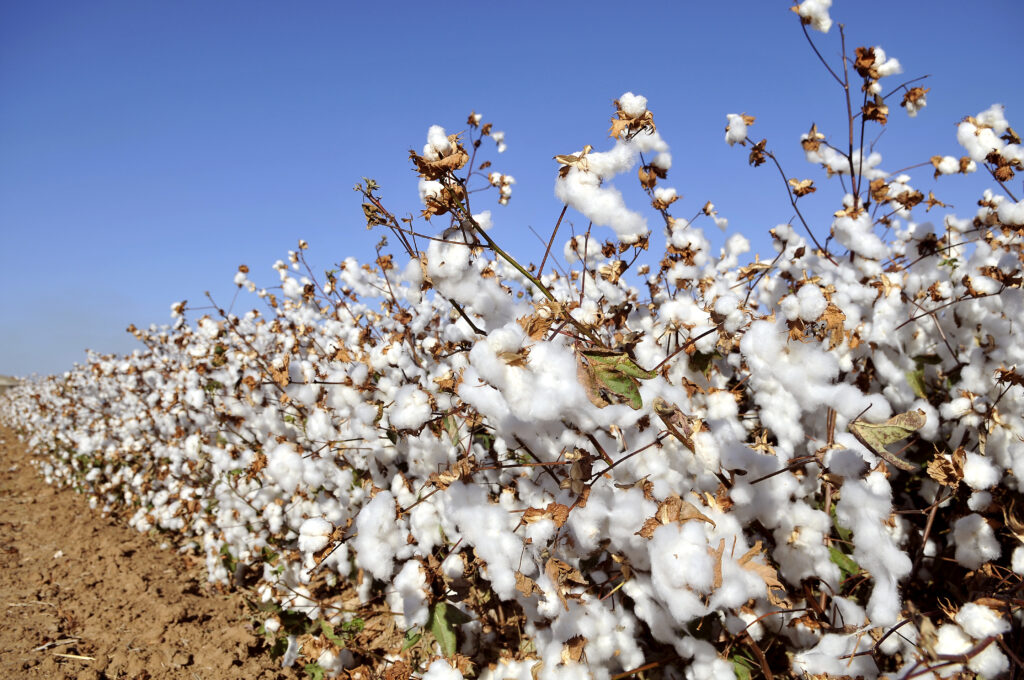Today, so many products are created from cotton. Since the fiber is pervasive in what we wear, eat, and use on a daily basis, it’s easy to forget that it comes from a crop, and must be harvested each and every year to meet worldwide demand. Cotton has been cultivated for over 5,000 years, and only halfway through the 20th century did modern farming methods move away from handpicking and horse plowing.
Today’s cutting-edge machinery, along with other technological advancements, allows farmers to grow cotton more efficiently. While cotton may take on many forms, including a shirt or a cleansing wipe, it’s important to understand where it comes from. In today’s post we’ll discuss how cotton is grown, processed, and used.
From Seed to Healthy Plant
Most farmers plant cottonseed in April. The best time depends on when the soil is warm enough for the seed to germinate, so the perfect time will vary somewhat from region to region. Luckily for farmers, new seed varieties, ones that mature earlier, are constantly being developed.
Until harvest, it’s important for farmers to keep their fields as free as possible from weeds, insects, and disease. Unattended weeds can choke out plants, and insects and diseases, if undetected, can devastate a crop. A healthy plant will flower, first turning yellow-white before becoming red. It then dies, leaving a boll (which explains the cotton farmer’s adage, “White, red, and dead”). Once this boll bursts open, the cotton dries when exposed to the sun. Now it’s ready to be harvested.
From the Field to the Cotton Gin
 In the old days of handpicking, a farmer could harvest 200 pounds of cotton a day. Now, with modern farming equipment, 200 pounds can be harvested in 90 seconds. Mechanical picker spindles pick and twist the raw cotton fiber from the bur, and the raw fiber is captured in a basket on the back of the picker. Today’s pickers are armed with yield monitors and GPS to maximize efficiency. For example, this updated technology allows them to track crop areas with better yields, which can help improve results when they plant again.
In the old days of handpicking, a farmer could harvest 200 pounds of cotton a day. Now, with modern farming equipment, 200 pounds can be harvested in 90 seconds. Mechanical picker spindles pick and twist the raw cotton fiber from the bur, and the raw fiber is captured in a basket on the back of the picker. Today’s pickers are armed with yield monitors and GPS to maximize efficiency. For example, this updated technology allows them to track crop areas with better yields, which can help improve results when they plant again.
Next, the harvested cotton is converted into modules (envision a long, tall rectangle of compressed cotton that would fit perfectly into the back of a tractor trailer). This happens one of two ways: 1) harvested cotton is first dumped into a boll buggy, and then into a module-builder where it is compacted into a tight block or 2) an onboard module-building cotton picker is used, which creates the module as the cotton is harvested. Obviously option 2 is more efficient since it saves a step, and allows more time to be spent harvesting the cotton. A single module of cotton typically weighs 20,000 pounds.
From the Cotton Gin to the Textile Mills
Once the module is tagged and taken to the gin, the true transformation takes place. Ultimately the goal is to separate the lint from the seed. First, any trash—such as grass or leaves—is removed from the bottom of the module. Next, fine-toothed saws pull out sticks and burs. The last step involves a crusher, which extracts the oil. Any leftover meal from the crushing process becomes feed for animals.
The cotton lint now must be cleaned since it comes from the field and can contain field dirt, plant parts, mold, and bacteria. Also, fibers must be removed from the seeds. Once it undergoes the cleaning process it enters a condenser, which converts the lint into 500-pound bales of cotton. These bales are then shipped to textile mills or manufacturers, the last stop before cotton becomes a product used by consumers.
The Beauty of Cotton
Now that you have a better understanding of how cotton is grown and processed, it’s much easier to see how it is used. From textile mills comes apparel, ranging from t-shirts to socks to dresses, all made with natural cotton. Other manufacturers make a variety of consumer goods, such as wipes, diapers, or filters. Cotton touches a variety of industries, such as feminine care, beauty, and quilting (just to name a few).
But the beauty of cotton is that most of what is harvested is used in some capacity. The oil finds its way into food products, such as crackers, cereal, or potato chips. As we noted above, the leftover meal becomes animal feed. Once cotton is harvested, very little of it goes to waste. This fact, along with how it goes from seed to product in less than a year, makes it as compelling a crop as it does a story.
